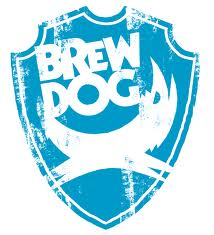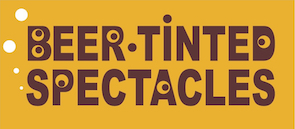Is your beer brand ‘On the up’?
That’s a question marketing types spend much of their working day trying to fathom an answer to. They will forensically rake through daunting data reports, ‘tracking studies’ or research findings (or at least they will pretend to). Is it a ‘Brand My Friends Rate’ or ‘Drunk in the last 7 days’? Sales reports may enrich the evolving story, as will findings ‘from the field’ (and by ‘field’ I mean the sort that was concreted over in the 1950s with a bar built on top, not the sort with cows gently masticating their fodder, if you get my drift). Quantitative Research agencies (companies that deal with banks of ‘hard data’) make their living out of helping marketing managers reach a point of view which they can convince their superiors with. Some big, household name companies won’t make decisions unless they have a positive read from this sort of analysis.
I was pondering on this, my past life, whilst drinking a bottle of a well known Italian pale-coloured beer at the weekend. As I don’t work for the BBC, you don’t need to be Steven Hawking to know I am referring to Peroni ‘Nastro Azzuro’. Clearly, here is brand of beer that is ‘on the way up’. I quite like Nastro. Not the beer itself necessarily, which, whilst I wouldn’t be disingenuous enough to say I dislike, doesn’t really float my boat. I can taste a little too much of the corn adjunct and too much of its 5.1% alcohol to an extent where it unbalances the beer. That’s not the point though is it? Because, as we all know, ‘We drink with our eyes’*. And to the eye, Nastro is a damn fine looking lady. Sultry, dusky, all Dolce Vita-ish, she tips her Prada sunglasses and looks back at you from under her mascara’ed eyelashes as you pour her into an hour-glass. “Drink me”, she whispers, “Let me caress your tastebuds”. Come on. Tell me I’m wrong.
But there are other brands on the way up. And they don’t rely on la bella’s allure and come-hither temptations. Doom Bar for instance. South of Watford Gap it turns up everywhere. Nice presentation; balanced taste, possibly, a nice glass if the bar is doing its job well. It’s the ‘Wimbledon-on-sea’ Rock effect I think, all Crew-clothed and clad in Sebago deckshoes. And ‘Doom Bar’ rhymes with ‘Ra! Ra!’, and “Huzzah!” which is rarely nice for the Chelsea Farmer brigade.
Other brands seem, in ‘health’ terms, to be on a downward track. Stella Artois comes to mind, even though she still gets around a bit. Others still seemed to have missed their time – to my mind Budweiser Budvar and Cobra could have done with a gentle nudge a few years back. They may have missed the rocket to Rockstar status, although our Indian friend is definitely giving it a go and with India developing as a destination of choice for Brits at the moment, I wouldn’t bet against it.
Yet pulling it all together, simply explaining this nebulous, intangible phenomenon, this magic, with the statement of ‘We drink with our eyes’ just won’t do. There must be more science to it. Hell, there must be more art. How to understand whether your beer could soar in the Heavens or face a future, naked, emaciated and lugging its bedraggled, hopeless, chinless self along the floor of life, whilst being ritualistically flagellated by the cudgels Mr Tesco – well that must be a worthwhile cause.
I started with the art, I’ll be honest, my favourite bit, and this is nothing to do with me being a beer** artiste. Beers ‘on the way up’ seem to have three moons which orbit and shape them. Let us call these moons: the Look, the Liquid and the Legend¹.
The look. Oh, here’s the heresy. It’s the most important one. Perhaps not as a lover of beer, but as an everyday person who buys things and gets through life as best he can, this is the one. Let’s face it – this is what Nastro Azzuro does brilliantly. A story – in fact, not a story because this is true, and I am sure very familiar to you. Question: where did you first have Nastro Azzuro? Who were you with? What were you were eating? What life were you living then? My answers: Pizza Express, with my (now) wife, eating Pizza, olives, salad of some description, perhaps some dough balls, living la Dolce Vita. In Chester³. Sound familiar?
What’s changed today? Well the bottle design has evolved slightly (important emphasis that). You can get it on draught now – but note how careful South African Breweries are with where they let it go (in the main). And the font. Ye Gads, look at it. She’s wearing a catwalk evening dress and making all the other fonts look like the Ant Hill Mob. Contest over. But wait. The glass. Be honest. How many have you got in your cupboard? People drink Nastro for the glass. Men and women; old and young, Wimbledon to Wilmslow to Wishaw.
The liquid. Nastro is OK. It has an edge (5.1% vs other ‘premium lagers’ at 5%) and it’s most certainly not offensive. There’s no lingering, bitter astringency so it appeals to most or can be tolerated by the beer snobs like me. Marketing text books will say you need a rational product difference or a functional reason to believe. Brewed in Italy and imported? So’s Moretti. Brewed with corn⁴? So’s Moretti. Uh, oh. The theory may have a loop hole.
The legend. Simple consistency & application of a single thought, year in, year out. Nastro = Italian style. That’s it. Now keep a look out for the adverts. Take a second look at the packaging, glassware, font. Italian flag colours? Yup, ever so ever so subtly. Macho men in the adverts? Nope, instead, dreamily beautiful, sophisticated, ever-so-ever-so-slightly unapproachable women. Appealing? Yep – to us all.
Yet, there’s science too. Behavioural science. This is all quite hip ‘n’ trendy stuff in the world of research at the moment, but the theory is actually almost 100 years old. Simply put, the behavioural science says this: whilst we like to think we make rational, logical and structured decisions in our lives, actually the majority (95 – 99%) of decisions we make are seemingly irrational, illogical and to the observer often contradictory vs. what we say we’ll do. The ‘why’s’ and ‘wherefore’s’ aren’t for here and now, so let me simply summarise why this is the case by saying ‘it’s because we have to do loads of stuff everyday’…the brain can’t cope, so it learns all sorts of short cuts. And these shortcuts – our personal lenses on things, biases, opinions – all have implications for beer.
Consider anchoring (alas, not Anchor Steam Beer, that particular delight will have to wait). Our brains want to make quick decisions so they tend to form early opinions and then stay anchored to them. Back to Nastro – your first experience. In a poshish Italian restaurant, with your favourite pizza and perhaps an extra topping, good company and a ristretto to finish – why not? As emotional anchors go, that’s not a bad place to start. Then rewind and repeat for a few years and your brand has a good foundation in people’s brains.
Or framing. We’re all familiar with the kamikaze (I am allowed to use that in these PC times -apologies in advance if not) pricing in supermarkets over the last few years, and ‘premium lagers’ have not escaped notice. Reassuringly expensive Stella Artois on ‘Two For £14’ or whatever, frames Nastro as something more special because it hasn’t got involved. Stick to your principles, keep your look consistent, as Nastro has done, and your competitors just make way for you.
Or the effect of perception. If you have a good, or bad, opinion of something, then your brain wants to show how bright and clever you are by confirming and reconfirming that decision. So Nastro continues to ‘show up’ nicely in Pizza Express and you just continue to justify why it’s such a great choice you’ve made. Then you see it somewhere else, and you tell your friends… and remember, we’re a herd species so we love to take a recommendation from someone else. Again, think of Stella Artois – it’s been discounting it’s price hugely for over a decade but it still the beer of choice for lots of people.
There’s more and it’s a fascinating field of investigation. The revelation for me is that I now realise that is is possible to plan to be lucky if you understand how the brain works, and then, like Nastro have done to their credit, resist the temptation to fiddle. The trouble for the big beer brand owners is that they need all the data, all those questionnaires, to prove they should keep their job. This new behavioural science at last seems to be supporting common sense – but it’s not for the faint hearted.

Come hither.
© David Preston, Beer Tinted Spectacles. Originally posted on posterous, April 2012
*Actually, I don’t. If you do and want a free tip for a more effective mode of consumption, try the orifice on the front of your face below your nose. It’s genius.
** Some rather unkind acquaintances of mine have used alternative descriptors.
¹ There is a fourth ‘L’ but I can’t remember what the ‘L’ it is²
² I’m here tonight, and twice on Thursdays. I thank you.
³ Actually, it could have been ‘Est! Est! Est!’ In Knutsford. Much the same, especially if you’re Jeremy Clarkson.
⁴ I can tell you’re tempted.



